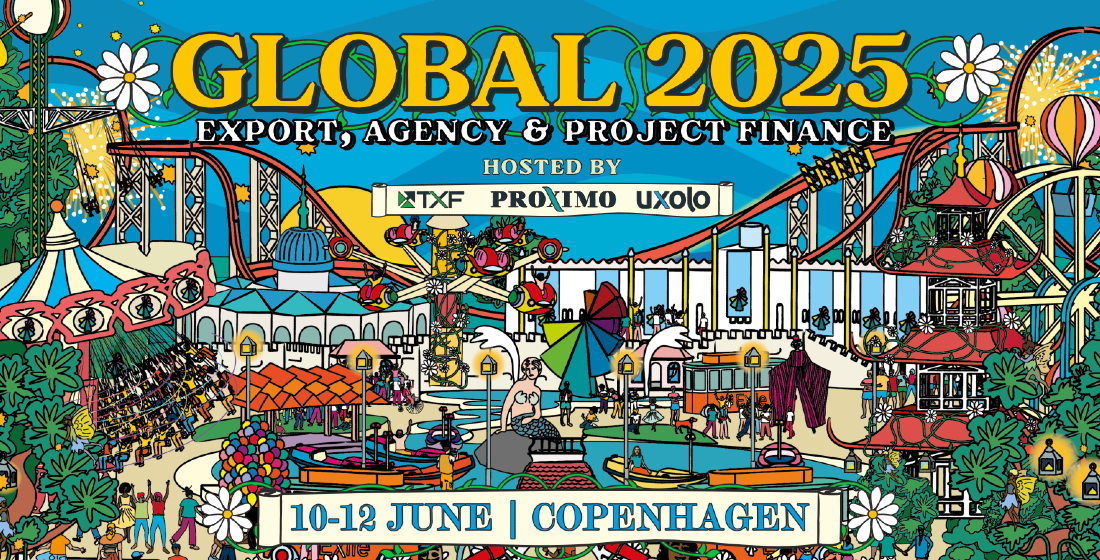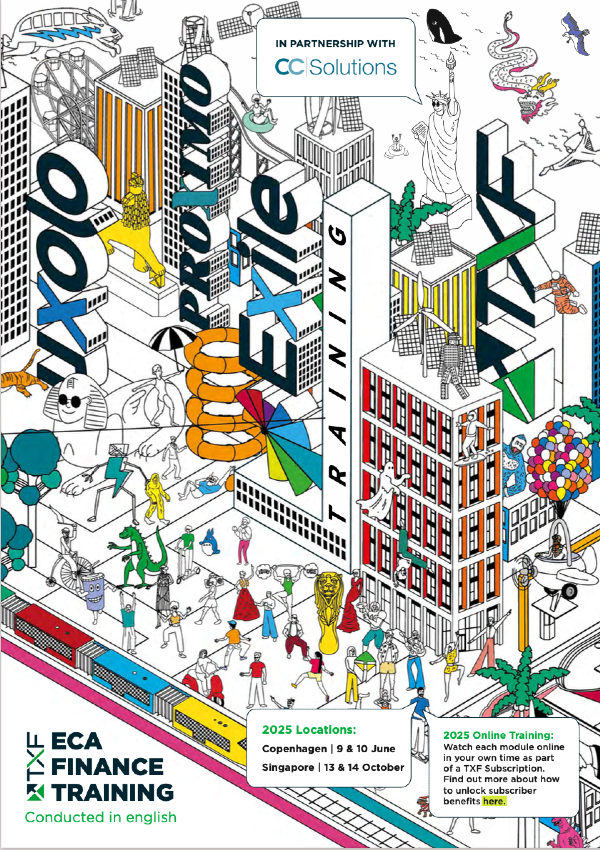Blended finance: Refloating an old idea with new capital
Much that is useful in blended finance is not new, and much that is new in blended finance is not useful – but the concept has captured the imagination of DFIs looking to access a large pool of below-market capital from philanthropists and impact investors that are willing to partner up to achieve their ESG goals.

Development finance is going through a period of unprecedented change. The US has begun the process of rebooting and rebranding the Overseas Private Investment Corporation (Opic) as the US International Development Finance Corporation. And two Chinese-inspired development finance institutions (DFIs) – the New Development Bank and the Asian Infrastructure Investment Bank – have made serious inroads in emerging markets infrastructure finance.
At the Agency, Development and Blended Finance Forum (hosted by Proximo and TXF) in Washington DC in April, most development financiers wanted to talk about blended finance rather than geopolitics. There’s still a lot of ambiguity about what blended finance is and whether it is traditional multi-sourced debt with a new name or an innovation – which leaves project developers confused about how important the concept is to their business.
The OECD defines blended finance as “the strategic use of development finance for the mobilisation of additional finance towards sustainable development in developing countries.” The IFC calls it “a financing package made up of concessional funding provided by development partners, along with commercial funds from IFC’s own resources, from other DFIs and from the private sector.”
Two good ways to view blended finance are with reference to its sources of capital, and then with reference to the ways these are combined. How much stress you put on each of these determines how novel you think blended finance is. You can say. as Metis Markets’ Mini Roy did in an article last year, that blended finance “is not new – but it has only recently begun to take on more significance in DFI financings”. Or, as John Morton, a senior fellow at the Atlantic Council and managing coordinator of the Climate Finance Partnership, notes, blending is simply “combining different levels of capital with different risk appetites and priorities, in a capital stack.”
New sources, with new priorities
To understand why blended finance has captured the imagination of DFIs it is probably best to look at the sources of capital available – and it is clear there has been a big shift in what’s on offer. “There is a large pool of below-market capital, from philanthropists to impact investors, to governments, that has awoken to the realisation that they can achieve policy or climate or sustainable development goals more rapidly if they partner up,” says Morton.
Donor governments – either directly through official development assistance (ODA) or bilaterally through development banks – have always featured at a variety of points in the capital structure of emerging markets infrastructure projects. They might provide grant funding for development-stage expenditure on projects, equity through vehicles like InfraCo, Actis or Aldwych, senior and subordinated debt through DFIs or concessional lending funds, and credit enhancement through an entity like GuarantCo. But voter pressure on governments to act on climate change and to alleviate poverty is gathering strength globally, and they are being forced to find more effective ways of putting more capital to work and potentially make that capital go further.
Then there are the philanthropic foundations that have become much less wary of joining forces with for-profit capital providers. They have had a very limited presence in infrastructure and project financings. The only real example of philanthropic capital currently at work in project finance is the Aga Khan Fund for Economic Development (AKFED), which has a long history of making equity investments in independent power projects through Industrial Promotion Services. But while AKFED is part of a philanthropic network, it has a profit-making mandate.
At the same time, there are the large institutional investors and asset managers that want to burnish their reputations for environmentally and socially responsible financing, but which may be wary of putting their capital to work in frontier markets, technologies or sectors. “Whether because of true conviction, pressure from stakeholders, a desire to show moral leadership, or pure greenwashing, these institutions are considering things they wouldn’t three years ago,” adds Morton.
Rejigging project financing
New blended finance initiatives are benefiting from propitious timing. Andrew Johnstone, a former chairman for Macquarie in Africa, came up with the idea for the Climate Investor One blended finance funds in 2014. “I realised that at Macquarie we had the best infrastructure equity team in Africa, and notwithstanding our best efforts we only put maybe $1.5 billion to work in 12 years, despite a demand for infrastructure financing one hundred times that amount,” he says. “So, I decided that we needed a new approach to financing these assets.”
“We won the Climate Finance Innovation Lab in April 2015, and Climate Investor One got a big boost at the COP21 climate talks in December 2015 from the governments of the Netherlands, and the UK. It took another 18 months to reach first close in June 2017, and we expect to reach final close in June 2019.” Johnstone acknowledges that Climate Investor One benefited from fortunate timing – growing awareness in both the private and private sector of the need for climate finance, the willingness of governments to support initiatives aimed at mobilising money from both sectors, and the emergence of terminology such as “blended finance” as a popular phrase. “It’s a bit more specific than impact investment, and bit less restrictive than project finance.”
The Climate Investor One funds place more emphasis on new financing sources than complex structuring. “I came to the realisation that in many markets, especially emerging markets, project finance is too cumbersome to get deals done, and you have to persuade too many people to write cheques to get the project financed,” says Johnstone. “There was an absence of capital that could get a project to a bankable state, and at Macquarie we ended going further up the development chain to get a deal construction-ready, becoming reluctant project developers.”
So Climate Investor One comprises a development fund, mostly funded through government and public sector agencies, which is equipped and designed to enthusiastically finance a large proportion of the project development costs up to construction, and a construction equity fund, a pool of unlevered funding equipped and designed to meet 75% of funding needs of a project during its construction stage, and a credit fund to refinance that construction equity after the completion of construction.
The development fund has similarities to some existing technical assistance funds in terms of its risk appetite, though Johnstone says it is more flexible, and gives a project developer access to the expertise at the funds’ manager, Climate Fund Managers. The development fund capital is repaid when construction commences and is included in the funding required for the construction stage. Once repaid, the capital is then applied to the next development project. Johnstone says that this allows entities such as the European Commission, USAID, Nordic Development Fund and the Green Climate Fund to participate in the early stage catalytic financing activity of projects on a self-replenishing and perpetual basis. The Climate Investor One credit fund, once up and running, will be the mechanism by which the construction equity fund recycles its capital. Johnstone suggests that the Climate Investor One capital will be recycled in this fashion between 2.5 and three times over the 20-year life of the initiative.
The construction equity fund comprises three classes of equity comprising a subordinated first loss tier (20%), a second tier (40%) and a more senior tier (40%), with each tier earning different returns and being repaid in a defined waterfall manner. As Johnstone explains, “the hard work of layering and blending capital happens at the fund level, where participants are better placed to handle such complexity, rather than at the SPV level. This is the shortcoming of project finance – dealing with multi-party complex structured finance at SPV level with new parties every time, over and over again, takes too long, costs too much, and in some instances just fails purely under the weight of the financing structure.”
Progress and challenges
There are currently 10 projects in the development fund, and one in the construction equity fund – an Asia-based commercial and industrial roof top solar developer and operator – and Johnstone says that the investment rate of the Construction Equity Fund is ramping up.
Still, Johnstone says that one challenge for the fund manager has been finding the right point of entry to start a conversation with institutional investors. “You ask for the head of blended finance at an investor, and you get a blank stare. Ask for the head of infrastructure, and they’ll be looking for you to use project finance structures. Ask for the head of funds, and you’ll need to show them the familiar GP/LP structure. The impact investing heads wants very specific and targeted mandates. Most don’t have a specific allocation for ‘climate’ or blended finance. But there is wide recognition at a new climate future will require new solutions and innovation in how these solutions are applied, and blended finance provides a powerful tool to take those steps without compromising risk or return thresholds. But fundraising is never an easy task.”
The other big challenge is funding the remaining 25% construction equity requirement. For a levered project, a 25% equity stake is usually manageable, but 25% of total project costs requires a much bigger player, and leaves developers worried about the dilution of their original stake. The best argument that the Climate Investor One funds can make is that making an appropriate return from a large number of fast-closing projects is better than making a disproportionate return from one project that may take years to come to fruition, if ever.
The Climate Investor One funds represent a new way of mixing up existing sources of capital, rather than the introduction of new sources, though they recognise that the existing DFI-driven project finance model can rely on developers to do much of due diligence for banks, and perhaps too often steers borrowers towards high-priced subordinated DFI debt products. The IFC’s and OECD’s blended finance principles are arguably an attempt to bring greater transparency to the use of higher-priced capital on development projects.
But the spread of projects on offer should provide blending opportunities for most types of capital – including philanthropies, the newest players on the field. They are, for now, the smallest sources of capital, and have the most legal restrictions on what they can support, particularly on deals that closely mirror traditional private market transactions. But they might also be the most valuable and potent capital in the stack, and are looking for opportunities to catalyse larger amounts of private financing: it was notable that the William and Flora Hewlett Foundation, the Jeremy and Hannelore Grantham Environmental Trust and the IKEA Foundation joined forces with the governments of France and Germany and asset manager BlackRock in announcing the launch of the Climate Finance Partnership in September 2018.
The TXF perspective
It’s hard not to get caught up in the enthusiasm for blended finance, given the new sense of urgency attached to combatting climate change, and the modest results that classic DFI-driven project finance has posted in emerging markets up till now.
Much that is useful in blended finance is not new, and much that is new in blended finance is not useful, or at least it has not yet proved itself useful in financing infrastructure. But much as the wave of capital pouring into infrastructure funds changed the way that project finance lenders do business in developed markets, the wave of capital focused on sustainability and climate change has huge implications for emerging markets renewables developers at the very least.
New sources of development capital do not represent a threat to the established DFIs – Morton concedes that DFIs are still the most obvious players to conduct any blending. And blended finance done well will be complementary – using as little concessional finance as is necessary to get a deal away. But meeting the $2 trillion per year spending gap required to meet the UN Sustainable Development Goals will still involve bringing most, if not all, DFIs on board, and a good proportion of developers active in emerging markets – not easy if blended finance requires adding another level of negotiation to the lengthy project finance deals typical of attempts at DFI and ECA multi-sourcing in the market to date.





